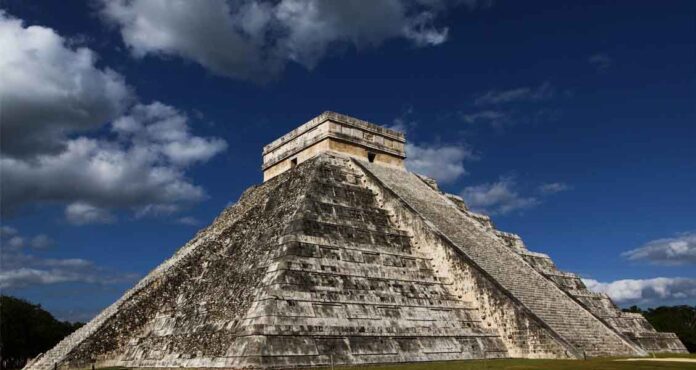El período Postclásico Temprano, definido entre 900 d.C. y 1,200 d.C., es de suma importancia, ya que simboliza la continuidad de la Civilización Maya después del colapso Clásico.
Aparte de las Tierras Bajas del Norte no se conocen muchos sitios de esta época, seguramente por los efectos de muchas migraciones fuera del Petén.
Sin embargo, no hay evidencia que hayan ocurrido movimientos masivos de personas en las Tierras Altas, lo que sugiere que las poblaciones mayas actuales son descendientes de los mismos grupos que se asentaron antes del Postclásico.
En este aspecto hay que contextualizar a los sitios Mayas dentro del ámbito mesoamericano, porque el Postclásico Temprano es la época llamada “tolteca”, donde predominó un estilo artístico “internacional”, plasmado en arquitectura, cerámica y escultura.
Sin embargo la palabra tolteca tiene un fuerte significado mitológico, ya que tula o tollan es el nombre del lugar de origen de muchos pueblos.
Por lo tanto, esta influencia tolteca debe entenderse como un proceso similar a lo que sucedió con los Olmecas durante el Preclásico Medio y con los Teotihuacanos en el Clásico Temprano, y no como conquistas o migraciones provenientes de un solo lugar.
De cualquier forma lo que es claro en este período es la desaparición del sistema monárquico del Clásico, el cual fue remplazado por gobiernos basados en confederaciones y/o concejos, donde el linaje fue la unidad básica de la organización sociopolítica.
La concentración de poblaciones en las Tierras Altas del Norte se debió en gran parte al auge de la ruta comercial que rodeaba la península de Yucatán, transformando considerablemente los patrones económicos.
Por ejemplo, es notorio que el jade decayó como elemento de lujo, el cual fue relativamente reemplazado por el oro, la turquesa y otros materiales provenientes del noroccidente de Mesoamérica.
Finalmente, el Postclásico Tardío representa el último momento de la cultura Maya prehispánica, el cual inicia en 1,200 d.C. y termina con los diferentes procesos de conquista a lo largo de toda la región.
Este período se caracteriza por la desaparición de los grandes estados territoriales en las Tierras Bajas, ya que el territorio se fragmentó en muchas provincias, regidas por capitales de menor escala.
Al contrario, en las Tierras Altas se consolidaron entidades políticas fuertes, que lograron una expansión territorial sin precedentes, a tal grado que conquistaron e integraron varias etnias distintas bajo su control.
Sin embargo, los conflictos entre estos grupos fueron aprovechados por los conquistadores como medio efectivo para su eventual derrota y dominación en el siglo XVI.
Al mismo tiempo, los grupos Mayas de la Costa del Golfo gozaron de un período de prosperidad, gracias a su dominio de las rutas marítimas y al contacto directo que tuvieron con los aztecas. Es por ello que lograron enfrentar a los españoles con un alto grado de resistencia.




